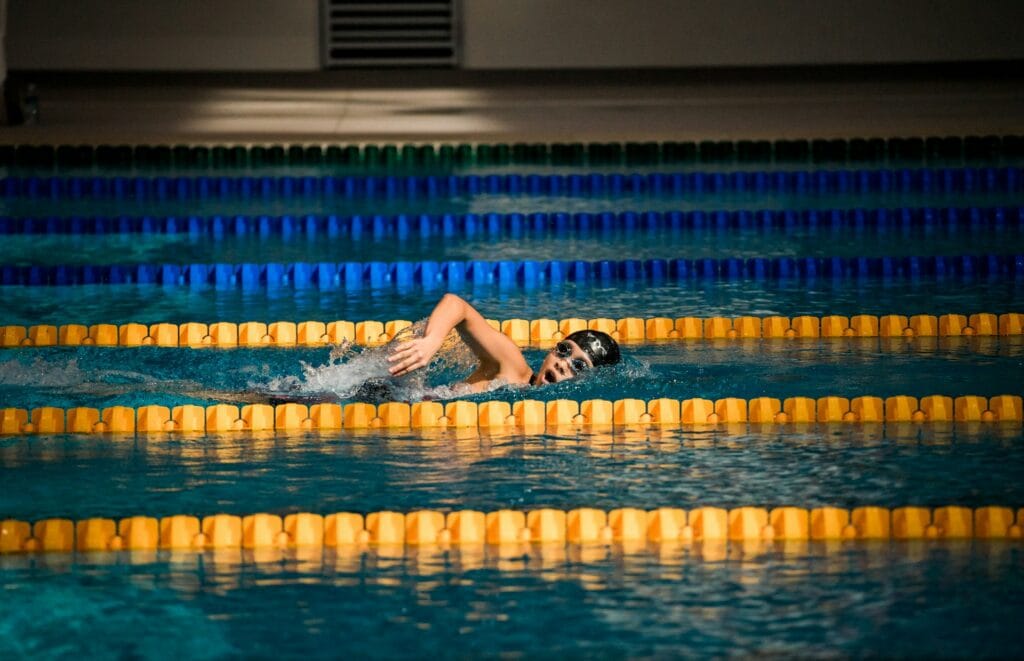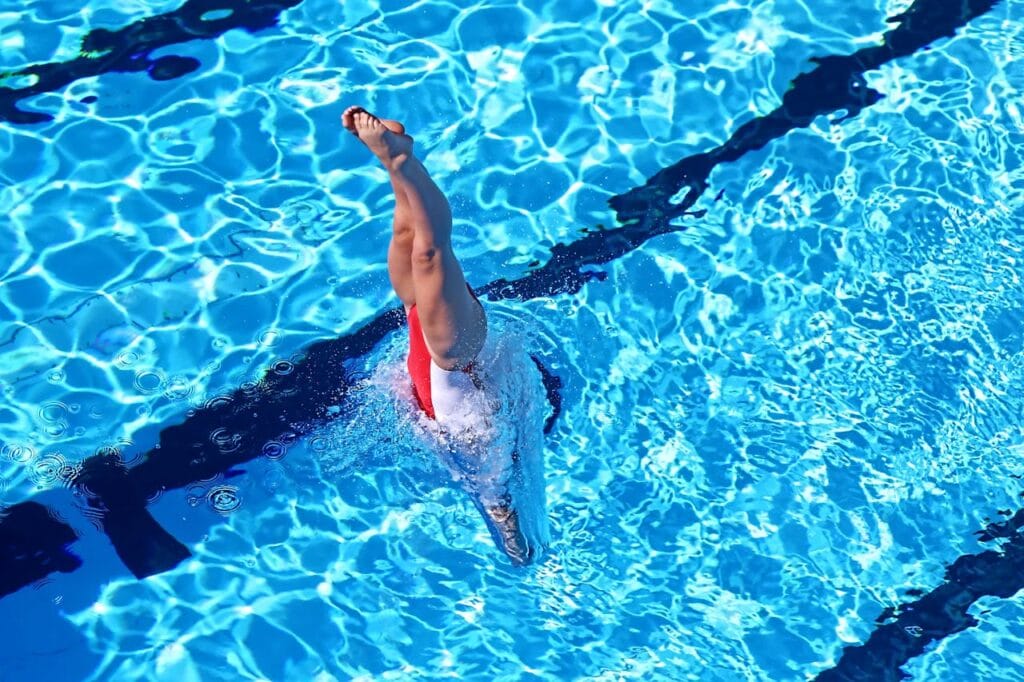Learn about What Are the 5 Basic Swimming Skills. Discover the five basic swimming skills, their benefits, and challenges. Learn essential techniques like breathing, floating, strokes, and endurance building for safe, efficient swimming.
Swimming techniques comprise all the important techniques that render purposeful movement and safety in water. It involves all possible breathing techniques, floating, kicking, and strokes like freestyle, backstroke, breaststroke, and butterfly. Those swimming techniques are complete enough to boost a swimmer’s endurance, coordination, and confidence, thus adding swimming to the category of workouts one can have in life as well as in skills training.
Features of Swimming Skills
Adaptability
Swimming is actually the adaptability that one can have when he or she swims in different types of water bodies. It can be performed from a swimming pool through a lake to an ocean. Swimming techniques can be modified for competition, for fun, or survival. For that reason, swimming becomes the ultimate functional life skill.

Improved Coordination
Swimming develops coordination through the simultaneous movements of arms and legs over the entire body. This helps to develop motor skills, body awareness, and balancing skills that contribute to the overall physical control of the person. This coordination they learn would help in other sports and also in their activities of daily living.
Endurance Building
Swimming regularly will also increase one’s lung capacity and cardiovascular endurance. This builds stamina that allows one to swim longer distances before feeling fatigued. Swimming, therefore, becomes a wonderful full-body workout for improving fitness and health.
What Are the 5 Basic Swimming Skills
Basic Swimming Skills
1. Breathing
Breathing is essential in swimming. Swimmers have to understand breathing rhythm, wherein they exhale when submerged, then inhale above the water. Controlled breathing builds endurance, postpones fatigue, and refines overall swimming technique. This enables swimmers to keep pace and expend energy in strokes.
2. Floating
Floating is the very first thing in swimming. It keeps the body at the water surface, using a relaxed position of the body. Floating skills in water develop confidence and balance and allow for better stroke and breathing regulation, as well as buoyancy control in deep water without any excess energy requirements.
3. Kicking
Effective kicking propels swimmers and gives them stability. To promote swiftness, efficiency, good body position in the water, and little drag, there are many kicking combinations used for different strokes, such as the flutter kick in freestyle and the dolphin kick in butterfly.
4. Strokes
Swimming strokes are structural movements for traveling through water. The four swimming strokes of freestyle and butterfly are further defined and differentiated arms and legs. Combining strokes will improve swimming abilities and endurance, adaptability in different water environments, and competition experience.
5. Backstroke
Backstroke is a form of swimming done on the back with a flutter kick and uses alternating arm movement. It needs an excellent increase in balance and coordination while controlling breathing. This stroke would be easy for beginners as it keeps their face up from the water and reduces the need to hold breaths.
6. Diving
Diving is entering the water headfirst, with the body in a streamlined position. The perfect diving technique involves a good push-off, arms extended forward, and a smooth entry. These three elements are essential in aiding racing starts and underwater gliding, where swimmers gain forward momentum before commencing their actual strokes.
7. Breaststroke
Breaststroke is a simultaneous arm sweep and frog-like kick. This stroke is slower but operates with immense efficiency; it is mostly practiced for endurance swimming. Proper arm movement-timing, together with breathing, is vital to keep a smooth gliding motion and reduce the drag while in water.
8. Butterfly
Butterfly is the most demanding in terms of physiological force, with simultaneous arm movement and vigorous dolphin kicks. Muscle power, flexibility, and precise timing are essential for swimmers to keep up an efficient rhythm. It builds endurance, coordination, and upper-body strength for subsequent swimming excellence.
9. Freestyle
Freestyle swimming is regarded as the fastest and most popular swimming style. While the body remains streamlined horizontally, the arms move alternately in strokes, and the legs perform flutter kicks. Breathing techniques, smooth arm recovery, and good flutter kick all combine to help a swimmer travel fast and endure in any competition and for fun.
Cons of Learning Swimming Skills
Initial Learning Challenges
It consists of commitment, training, and patience to swim correctly. Some people keep progressing slowly because of water fear, as it takes quite some time to become fully confident in water by overcoming self-doubt and mind conditioning.
Access to Facilities
Besides, not everyone has easy access to swimming pools or safe water bodies; the “proper venue” can be hard to find, and swimming lessons or memberships may prove expensive, turning swimming into an expensive hobby or skill to learn and upkeep through time.
Risk of Fatigue and Injury
Swimming is an endurance sport, and thus excessive swimming may lead to a state of fatigue or cramps of the muscles. Incorrect strokes or excessive repetition can also produce injuries, as in the case of swimmer’s shoulder, making it a must to use correct techniques and have ample rest in between training.

Environmental Risks
Swimming in open waters is usually dangerous because currents may arise unexpectedly; one may get into direct contact with marine life. Furthermore, chlorinated pools consider the limitations of human skin, the eyes, or even allergic reactions, wherein a few do not prefer swimming every time.
FAQs
Why is breathing important in swimming?
The right breathing technique allows swimmers to have endurance and not tire easily. Exhaling while underwater and inhaling at the correct moments helps maintain the rhythm and efficiency of strokes.
Is floating necessary for all swimmers?
Yes, floating helps in being safe and secure in the water. It conserves energy, helps maintain balance, and keeps you from drowning, particularly in deep water or emergencies.
What is the role of kicking in swimming?
Kicking the whole body propels the body forward, stabilizes it, and makes it a fast stroke. Different strokes additionally require a particular kick, such as flutter kicks in freestyle and breaststroke kicks.
Can I learn to swim without a coach?
Yes, but a coach quickens the process of learning and guarantees proper technique. Self-learning using online tutorials and practicing in a pool takes effort and persevering.
Conclusion
Swimming skills make an individual adaptable, coordinated, and enduring. Besides safety, it is equally significant for fitness. Accessibility and risk factors pose huge barriers to swimming; however, mastering swimming has lifelong returns in terms of improved health, confidence, and survival skills under different conditions of water.
